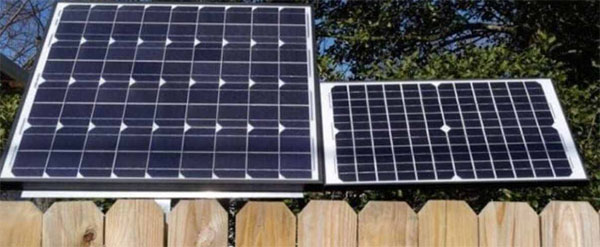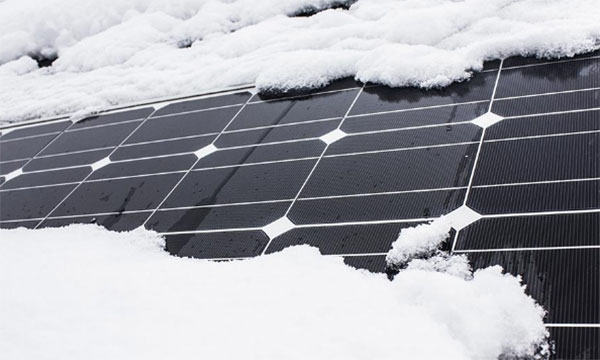Description
Solar panels can work through glass windows, but efficiency significantly decreases due to reduced sunlight transmission and reflection.
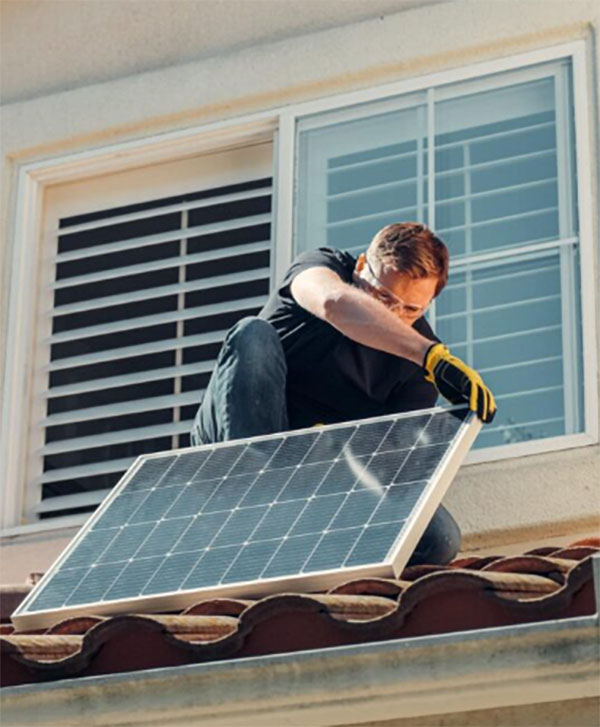
Understanding Solar Panels and Glass Windows
The Basics of Solar Energy Capture
Solar panels, or photovoltaic (PV) panels, convert sunlight into electricity by allowing photons, or light particles, to knock electrons free from atoms, generating a flow of electricity. Solar panels consist of many solar cells made from layers of silicon, phosphorus (which provides the negative charge), and boron (which provides the positive charge). The efficiency of a solar panel in converting sunlight into electricity plays a crucial role in its performance. On average, commercial solar panels have an efficiency rate between 15% and 20%, although some premium models can exceed 22%.
The material and quality of solar panels significantly influence their efficiency and lifespan. For instance, monocrystalline solar panels, known for their high efficiency and longevity, can last more than 25 years, often reaching up to 30 or 35 years with minimal degradation in performance. The cost of installing a solar panel system can vary widely, generally ranging from $15,000 to $25,000 after federal tax credits, depending on the system's size and complexity.
How Glass Windows Affect Solar Radiation
Glass windows can impact the amount of solar radiation reaching the solar panels. Standard window glass typically transmits about 90% of visible light but can block over 90% of UV and infrared radiation due to its inherent properties. This selective transmission can affect the performance of solar panels placed behind glass, as solar cells respond to a broad spectrum of sunlight, including UV and infrared.
The angle of incidence of sunlight on glass also affects its transmittance. Light that hits the glass at a perpendicular angle is mostly transmitted, while light at a more acute angle is increasingly reflected.
This means that the positioning of solar panels behind glass windows needs to be optimized for maximum sunlight exposure.
Special coatings on windows, such as low-emissivity (low-E) coatings, are designed to improve energy efficiency by reflecting infrared light while allowing as much visible light as possible to pass through. However, while beneficial for reducing energy costs in buildings, these coatings can further reduce the amount of useful solar radiation reaching indoor solar panels, potentially decreasing their output efficiency.
To optimize solar panel performance behind glass windows, it is essential to consider the type of glass and its properties. Using glass with higher transparency to the full spectrum of solar radiation and minimizing reflection losses through strategic placement can enhance the effectiveness of solar panels in such setups.
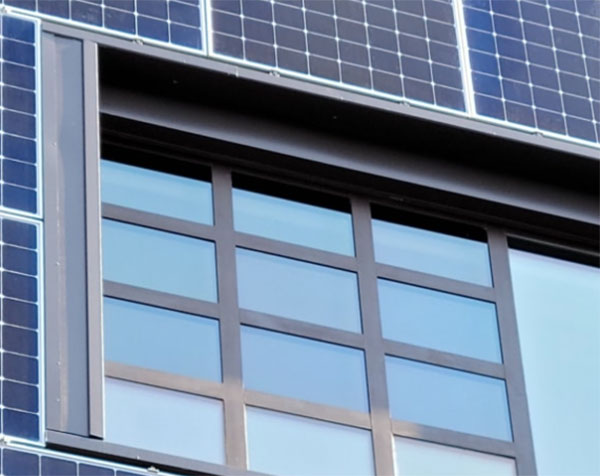
Technical Aspects of Solar Panels Behind Glass
Types of Solar Panels and Their Efficiency
Solar panels are categorized mainly into three types: monocrystalline, polycrystalline, and thin-film. Each type has its unique attributes, efficiency rates, and cost implications, making them suitable for different applications.
- Monocrystalline solar panels are known for their high efficiency and longevity. They can achieve efficiency rates of 18% to 22% and are made from single-crystal silicon, making them more efficient at converting sunlight into electricity. The cost of monocrystalline panels is higher due to the complexity of their manufacturing process. Prices for these panels can range from $1 to $1.50 per watt, translating into a substantial investment for larger setups. However, their long lifespan of up to 35 years can offset the initial cost over time.
- Polycrystalline solar panels have slightly lower efficiency rates, typically between 15% and 17%. These panels are made from multiple silicon crystals, which makes them less expensive to produce than their monocrystalline counterparts. The cost for polycrystalline panels ranges from $0.90 to $1 per watt. While they offer a shorter lifespan of about 25 to 30 years, their lower upfront cost makes them a popular choice for residential installations.
- Thin-film solar panels offer the lowest efficiency, between 10% and 13%, but are the best option for flexibility and weight considerations. They are made by depositing photovoltaic material on a solid surface, like glass or plastic. Thin-film panels are less affected by high temperatures and shading, making them suitable for a wide range of environments. Their cost can vary widely, but they are generally cheaper than crystalline silicon panels. The major drawback is their larger space requirement for the same electrical output and a shorter lifespan of about 20 years.
The efficiency of solar panels significantly impacts their power output and overall cost-effectiveness. High-efficiency panels generate more electricity over a smaller area, but at a higher cost.
Glass Transparency and Solar Absorption Rates
The type of glass used in windows can significantly affect the solar radiation that reaches the solar panels placed behind them. The transparency of the glass to different wavelengths of sunlight, including ultraviolet (UV), visible light, and infrared (IR), determines how much solar energy can be absorbed and converted into electricity by the panels.
- Standard clear glass typically allows about 90% of visible light to pass through but can block a significant portion of UV and IR light. This can reduce the overall efficiency of solar panels behind such glass, especially those that are designed to capture a broader spectrum of sunlight.
- Low-emissivity (low-E) glass is coated with a thin metallic layer that reflects IR light while allowing most of the visible light to pass through. This type of glass can help reduce energy costs by minimizing heat transfer but may also decrease the amount of solar energy available to solar panels behind the glass, particularly in the IR spectrum.
- Tinted glass reduces the transmission of visible and infrared light, which can lower the temperature inside a building but also reduce the solar panel's ability to generate power.
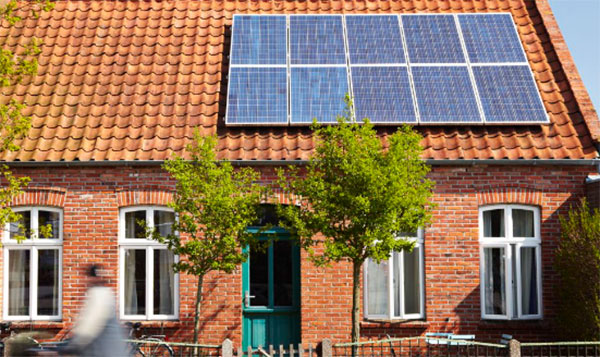
Factors Influencing Solar Panel Performance Through Glass
Angle of Incidence and Its Impact on Solar Gain
The angle of incidence the angle at which sunlight hits the solar panel plays a critical role in the efficiency of solar energy capture.
Optimal solar gain is achieved when sunlight strikes the solar panel at a perpendicular angle (90 degrees). This configuration maximizes the amount of sunlight absorbed by the panel, thereby increasing its electrical output. However, due to the Earth's rotation and the fixed positions of most installations, the angle of incidence varies throughout the day and year.
For solar panels placed behind glass windows, the challenge is compounded. Reflection losses increase as the angle of incidence deviates from perpendicular. Glass windows can reflect a significant portion of the incoming light at oblique angles, reducing the effective solar radiation reaching the panel. To mitigate this, solar panels can be equipped with tracking systems that adjust their orientation to follow the sun's path, maximizing the angle of incidence throughout the day.
However, these systems can add significant cost, with prices ranging from $500 to $1,000 per panel, depending on the complexity and scale of the system.
The Role of Window Coatings and Tints
Window coatings and tints can influence the performance of solar panels by altering the amount and type of sunlight that penetrates through glass. Low-emissivity (low-E) coatings are designed to reduce heat transfer by reflecting infrared light while allowing visible light to pass through. While low-E coatings can improve energy efficiency within buildings,
they can also decrease the infrared light available to solar panels, potentially reducing their output by up to 10-15%.
Tinted windows, which are designed to reduce glare and heat build-up inside buildings, can have a similar effect. By blocking a portion of the visible and infrared spectrum, tinted windows can reduce the solar panel's ability to generate electricity. The impact of tinted glass on solar panel performance varies depending on the tint's density and color, with darker tints generally resulting in higher losses.
Optimizing Solar Panel Usage in Indoor Environments
Strategies for Maximizing Solar Energy Capture Through Windows
Maximizing solar energy capture through windows requires a multifaceted approach, focusing on both the physical positioning of the solar panels and the properties of the windows themselves. Here are several strategies:
- Optimal Placement and Orientation: Position solar panels to face south (in the Northern Hemisphere) to maximize sunlight exposure throughout the day. The ideal tilt angle varies based on latitude but generally ranges between 25 and 35 .
- Use of Tracking Systems: Implementing solar tracking systems can increase energy production by up to 25% by adjusting the panels to follow the sun s path across the sky. However, these systems can be costly, with prices adding significantly to the initial investment.
- Window Modifications:
- Choose windows with high transmittance in the visible and near-infrared spectra to enhance solar gain.
- Consider replacing or retrofitting windows with low-emissivity (low-E) coatings that minimize infrared and ultraviolet light blockage.
Suitable Types of Solar Panels for Window Applications
Selecting the right type of solar panel is crucial for indoor applications. The suitability varies based on efficiency, size, and aesthetic considerations:
- Monocrystalline Solar Panels: Known for their high efficiency (up to 22%) and longevity (30+ years), these panels are ideal for applications where space is limited, and maximum power output is desired. However, they come with a higher price tag, averaging $1 to $1.50 per watt.
- Polycrystalline Solar Panels: Offering slightly lower efficiency (15-17%) at a reduced cost ($0.90 to $1 per watt), these panels can be a cost-effective solution for larger window areas where aesthetic uniformity is not a primary concern.
- Thin-Film Solar Panels: These panels provide the most versatility in terms of installation, capable of being applied directly to glass surfaces. With efficiencies ranging from 10% to 13%, they are less efficient but can cover larger areas without significant structural support. Their cost is generally lower, but the total output might be less compared to crystalline panels.
Key Considerations for Indoor Solar Panel Applications:
- Energy Needs Assessment: Calculate the energy requirements to determine the number and type of panels needed.
- Budget Analysis: Include initial setup costs, potential energy savings, and long-term financial benefits in the budget plan.
- Aesthetic Impact: Consider the visual impact of solar panels on indoor and outdoor aesthetics, choosing solutions that complement the building design.
- Regulatory Compliance: Ensure that the installation adheres to local building codes and regulations regarding solar panel installations.
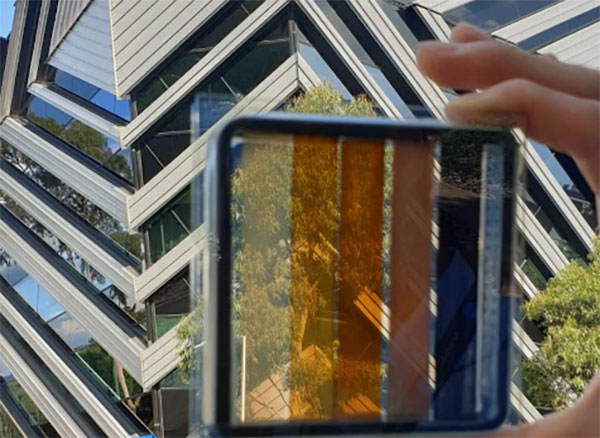
Case Studies and Real-World Applications
Examples of Successful Indoor Solar Panel Installations
The adoption of solar panels in indoor environments, particularly in glass-enclosed spaces, has demonstrated significant benefits in terms of energy savings and sustainability. Here are a few notable examples:
- Urban Greenhouse Projects: A pioneering project in Amsterdam utilizes transparent solar panels integrated into a greenhouse roof, allowing for photosynthesis while generating electricity. The system produces approximately 265 kWh per square meter annually, showcasing the potential for dual-purpose agricultural and energy-producing spaces.
- Office Buildings with Integrated Solar: In San Francisco, an office building has installed semi-transparent thin-film solar panels on its southern facade. These panels not only generate power, reducing the building's energy costs by 25%, but also act as a dynamic shading system, enhancing the building's thermal performance.
- Retail Spaces: A shopping mall in Australia has implemented polycrystalline solar panels atop its glass roof. The installation, covering 10,000 square meters, generates over 1.5 MW of power, significantly offsetting the mall's energy consumption. The project cost was approximately $2.5 million, with an expected payback period of 5 years due to energy savings and government incentives.
Key takeaways from these installations include:
- The importance of selecting the right type of solar panel to balance light transmission and energy generation.
- The potential for substantial energy savings and reduced carbon footprint in commercial and agricultural settings.
- The necessity of considering the aesthetic integration of solar panels into the design of buildings and spaces.
Innovations in Solar Technology for Glass-Enclosed Environments
Recent advancements in solar technology have focused on enhancing the compatibility and efficiency of solar panels for use in glass-enclosed environments:
Transparent Photovoltaic Glass
This cutting-edge technology involves embedding solar cells within two layers of glass, maintaining transparency while generating electricity. Efficiency rates for these panels are currently around 10%, with ongoing research aiming to increase this figure.
Organic Photovoltaic Cells (OPVs)
OPVs offer a flexible, lightweight alternative to conventional solar technologies, with the ability to be applied directly to glass surfaces. While their current efficiency is lower, at around 8-12%, their transparency and adaptability make them suitable for architectural applications.





